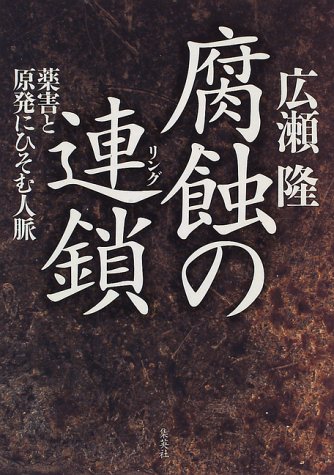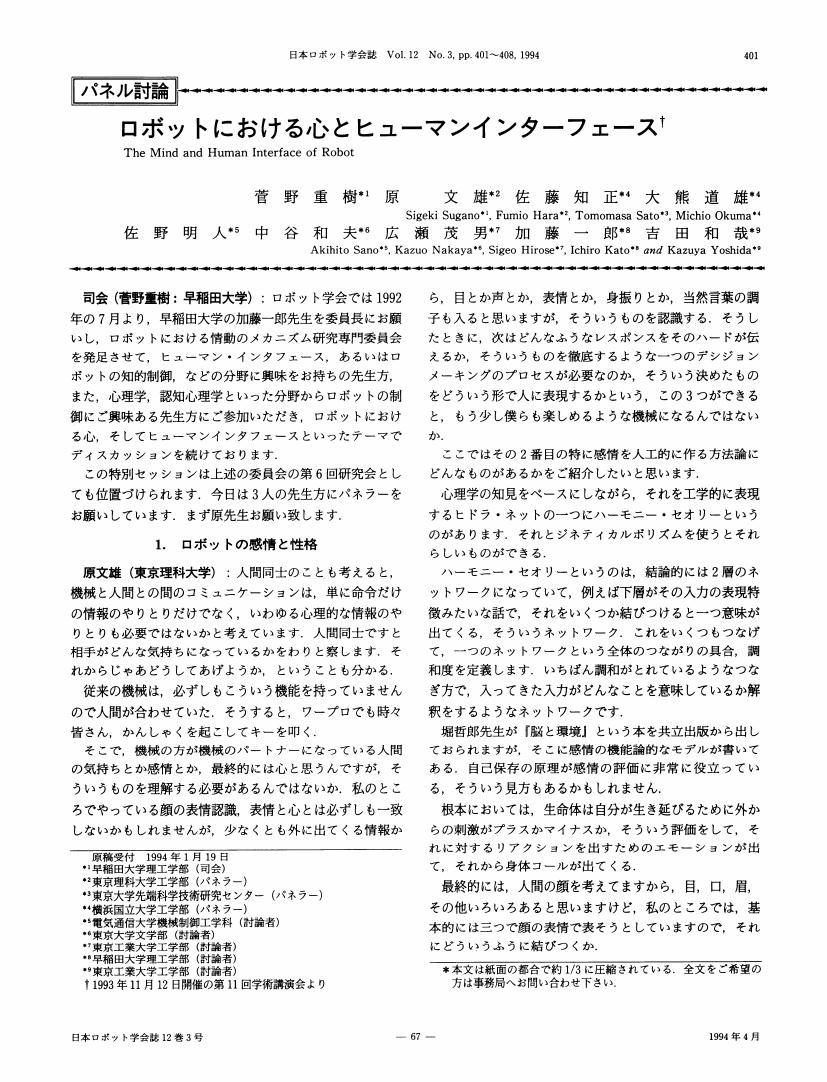1 0 0 0 OA 局所再発と全身多発転移を伴う猫の両側性肛門囊腺癌
- 著者
- 斑目 広郎 広瀬 学 広瀬 みさき 佐藤 加奈子 森 恵 山田 一孝
- 出版者
- 公益社団法人 日本獣医師会
- 雑誌
- 日本獣医師会雑誌 (ISSN:04466454)
- 巻号頁・発行日
- vol.76, no.8, pp.e183-e186, 2023 (Released:2023-08-05)
- 参考文献数
- 9
16歳齢,避妊雌猫が肛門左側にできた潰瘍化した皮膚腫瘤を主訴に個人動物病院に来院した.切除腫瘤の病理組織学的検査を実施し,肛門囊腺癌と診断後,第82病日に死亡した.死後CT後に病理解剖を実施し,局所再発と全身多発転移を伴う両側性肛門囊腺癌と診断した.
1 0 0 0 OA 鼻腔内腫瘤を形成した浸潤性下垂体腺腫の1例
- 著者
- 日野 明子 広瀬 隆則 山田 順子 高井 チカ子 山口 美紀 佐野 寿昭
- 出版者
- 公益社団法人 日本臨床細胞学会
- 雑誌
- 日本臨床細胞学会雑誌 (ISSN:03871193)
- 巻号頁・発行日
- vol.38, no.1, pp.93-97, 1999-01-22 (Released:2011-11-08)
- 参考文献数
- 9
- 被引用文献数
- 1
鼻腔内腫瘍として発症した浸潤性下垂体腺腫を経験したので細胞所見とともに報告する. 症例は64歳, 女性. 右鼻閉感と鼻出血が出現し, 耳鼻科にて鼻腔内腫瘍を指摘された. 頭部MRIで腫瘍は蝶形骨洞を主座とし, 眼窩, 上顎洞, 筋骨洞, 鼻腔への進展が認められた. トルコ鞍は腫瘍で置換されていた. 鼻腔からの生検で神経内分泌腫瘍と診断され, 当院脳神経外科にて経蝶形骨腫瘍摘出術が行われた. 捺印細胞像では腫瘍細胞は均一で平面的に配列していた. 細胞質は豊富でライトグリーンに淡染し, 核は円形でクロマチンは細顆粒状に増量していた. 組織像では充実性もしくは索状に配列し, perivascular pseudorosetteやmicrocystがみられた. 免疫組織化学にてcytoker-atin, chromogranin A, synaptophysinが陽性で, 下垂体前葉ホルモンは陰性であった. 電顕的には神経内分泌顆粒が認められた. 以上から下垂体腺腫null cell typeと診断した. 本腫瘍は頭蓋内の良性腫瘍だが, 時に周囲の骨を破壊して眼窩や鼻腔などの頭蓋外へ進展することがあり, 悪性腫瘍と誤認しないことが大切である.
1 0 0 0 OA 通所リハビリテーション利用者におけるサルコペニアの有病率と危険因子
- 著者
- 柴 隆広 沢谷 洋平 広瀬 環 石坂 正大 久保 晃 浦野 友彦
- 出版者
- 一般社団法人 日本老年医学会
- 雑誌
- 日本老年医学会雑誌 (ISSN:03009173)
- 巻号頁・発行日
- vol.57, no.2, pp.149-154, 2020-04-25 (Released:2020-05-29)
- 参考文献数
- 21
- 被引用文献数
- 1
目的:通所リハビリテーション利用者のサルコペニアの有病率を明らかにする.また,サルコペニアとなりうる危険因子を明らかにする.対象:当事業所の利用者104名を対象(男性56名,女性48名,平均年齢78.6±7.7歳)とした.方法:サルコペニアの診断はAWGSの診断アルゴリズムを基準に分類した.サルコペニアの危険因子の調査では①脳血管疾患,②高血圧,③呼吸器疾患,④循環器疾患,⑤整形疾患,⑥骨折,⑦がん,⑧難病,⑨糖尿病,⑩過去1年間の転倒歴の10項目を調査した.結果:有病率はサルコペニア51.9%であった.サルコペニアの危険因子として「がん」「転倒歴」の項目に有意差が認められた.結語:要支援・要介護高齢者(特にがん,転倒歴を有する者)はサルコペニアのリスクが非常に高く,早期からの介入が望まれる.
1 0 0 0 腐蝕の連鎖(リング) : 薬害と原発にひそむ人脈
1 0 0 0 OA トマス・アクィナス『神学大全』について
- 著者
- 広瀬 京一郎
- 出版者
- 日本基督教学会
- 雑誌
- 日本の神学 (ISSN:02854848)
- 巻号頁・発行日
- vol.1967, no.6, pp.70-75, 1967 (Released:2009-09-16)
1 0 0 0 OA 逆算法による詰め将棋の自動創作
- 著者
- 広瀬 正幸 伊藤 琢巳 松原 仁
- 出版者
- 一般社団法人 人工知能学会
- 雑誌
- 人工知能 (ISSN:21882266)
- 巻号頁・発行日
- vol.13, no.3, pp.452-460, 1998-05-01 (Released:2020-09-29)
Several techniques have been developed to solve puzzle problems in conventional AI, but there are few attempts to compose problems automatically by computers. Tsume-Shogi, a mating problem of Japanese Chess, is a kind of puzzles that is created and solved according to specific rules. This paper presents a system to compose Tsume-Shogi problems by reverse method. The search space increases enormously when the reverse method is adopted, but we can reduce it by using some constraints. We conducted several experiments with our method to compose Tsume-Shogi problems and showed that our system could compose some good short Tsume-Shogi problems and some special Kyuku-Tsume problems.
- 著者
- 広瀬 裕子
- 出版者
- 専修大学社会科学研究所
- 雑誌
- 専修大学社会科学研究所月報 (ISSN:0286312X)
- 巻号頁・発行日
- vol.617, pp.1-36, 2014-11-20
1 0 0 0 OA 反復性発話について
- 著者
- 波多野 和夫 広瀬 秀一 中西 雅夫 濱中 淑彦
- 出版者
- 日本失語症学会 (現 一般社団法人 日本高次脳機能障害学会)
- 雑誌
- 失語症研究 (ISSN:02859513)
- 巻号頁・発行日
- vol.14, no.2, pp.140-145, 1994 (Released:2006-06-06)
- 参考文献数
- 13
- 被引用文献数
- 5 2
反復性発話あるいは常同性発話の概念を整理し,さまざまな特徴を取り上げて,それによる分類を試みた。本稿では,この概念は可能な限り広く設定されており,反復言語,滞続言語のみならず,反響言語,再帰性発話などをも包含している。このような現象論としての症状学に立って,吃音症状,CV再帰性発話,部分型反響言語,音節性反復言語,語間代を含む音節レベルの反復性発話をまとめて検討した。特に,このうちの語間代 (Logoklonie) の問題に焦点を当て,自験症例の報告を通じて,その成立に関与する要因を検討することにより,発現機制に関する考察を試みた。
1 0 0 0 OA Ceftizoxime (CZX) の実験動物における体内動態について
- 著者
- 村川 武雄 坂本 博 深田 志計実 中本 昭治 広瀬 俊治 伊藤 位一 西田 実
- 出版者
- 公益社団法人 日本化学療法学会
- 雑誌
- CHEMOTHERAPY (ISSN:00093165)
- 巻号頁・発行日
- vol.28, no.Supplement5, pp.111-118, 1980-09-25 (Released:2011-08-04)
- 参考文献数
- 7
Ceftizexime (CZX, FK 749) をマウス, ラット, イヌおよびサルに非経口的に投与したときの薬動力学的特性について, Cefotiam, Cefmetazole, Cefotaxime, CefamandoleおよびCefazolinの場合と比較検討した。CZXの血清中濃度は大動物 (イヌおよびサル) では全般に他剤より高値を示したが, 小動物 (マウスおよびラット) では低値を示した。検討した実験動物において, 投与したCZXの約80%が未変化体で24時間尿中に排泄された。またCZXのラットにおける胆汁中排泄率は低く, 24時間内で3.7%であった。またイヌにおける24時間胆汁中排泄率は0.45%と低かったが, 胆汁中濃度は1時間で179μg/ml, 2時間で148μg/mlと比較的高値を示した。1回静注投与後の血清中濃度のデータを用いて, two compartment open modelにより薬動力学的解析を行なった。各種動物の尿中の抗菌活性物質はCZXたけであったが, ラット胆汁中にだけCZXとは具なる活性代謝物が検出された。CZXは血清, 尿および組織ホモジネート中で安定であったが, Cefotaximeはラット組織ホモジネート中で不安定であった。CZXの血清タンパク結合率は検討したすべての血清種で他剤より低値を示し, ヒト, イヌおよびラットでそれぞれ31%, 17%および32%となった。
1 0 0 0 OA 絶対零度の決定に挑んだ日本の科学者
- 著者
- 広瀬 茂久
- 出版者
- 日本熱測定学会
- 雑誌
- 熱測定 (ISSN:03862615)
- 巻号頁・発行日
- vol.41, no.3, pp.99-103, 2014-07-25 (Released:2022-11-20)
The challenge of determining the last two digits of absolute zero temperature attracted several groups of researchers around the world in the first half of the 20th century. It is little known that Japanese researchers, Jiro Oishi and Masao Kinoshita, were the ones who successfully settled the dispute over these two digits. Their work played a key role in defining the zero point on the thermodynamic temperature scale, and thus later in defining the unit of thermodynamic temperature, the kelvin, in terms of the absolute zero and the triple point of water. This current definition of kelvin is scheduled to be redefined based on the Boltzman constant. On the occasion of this turning point of the definition of the kelvin, it may be timely to reflect on the historic milestone work of Oishi and Kinoshita. The background and current status for changing the definition are also described.
1 0 0 0 OA ロボットにおける心とヒューマンインターフェース
1 0 0 0 OA 猿石をめぐる造形の世界 : 日吉・山王の猿を追って
- 著者
- 広瀬 鎮
- 出版者
- 名古屋造形芸術短期大学
- 雑誌
- 名古屋造形芸術短期大学研究紀要 = Bulletin of Nagoya Junior College of Creative Art (ISSN:03882853)
- 巻号頁・発行日
- vol.15, pp.27-41, 1992-04-30
1 0 0 0 OA 我国猿まわし芸能集団における芸能の継承と芸能の観客受容
- 著者
- 広瀬 鎮
- 出版者
- 日本文化人類学会
- 雑誌
- 民族學研究 (ISSN:24240508)
- 巻号頁・発行日
- vol.44, no.2, pp.133-159, 1979-09-30 (Released:2018-03-27)
In 1978 in Hikari City Hall, Yamaguchi prefecture, the author delivered a lecture on "Japanese Monkeys and the Japanese People : the History of the Feeling of the Japanese to the Monkey." From this time members of the Sarumawashi no Kai (The Group of Monkey Trainers for the Restoration of Traditional Performances of Monkeys) and the author began a survey of the environment and actual lives of monkey trainers as well as the accompanying lore of the traditional monkey training techniques in Yamaguchi, along the Shimada and Nishiki rivers to their upper basins. Throughout the long history of Japan there has existed a special feeling for the Japanese monkey and the traditional Monkey Performances. Once the monkey was regarded with fear as a sacred animal or as a motif for god, but gradually in the development of Japanese society, the feeling changed. In modern Japan, year by year the traditional monkey lore is vanishing along with the opportunities for Monkey Performances. The author recognizes the fact that in the fields of natural science, ethnology and folklore there is intense interest in the relationship between man and non-human primates. Since ancient times the Japanese attitude toward the Japanese monkey has altered. The Monkey Performances were included events after the feeling of fear of the monkey was conquered. A study of the depth of feeling for the monkey in Japanese culture and the psychological evaluation of monkey lore appeared in Mayazaru Shinko, referring to the belief of the stable with monkey and horse, which had some historical influence in early times. The actual characteristics of Monkey Performances in the religious dances, objects of worship and in documents were arrived at through textual information and successive folklore in Japanese culture. From the medieval period of Japanese history the characteristics and value of the peculiar Monkey Performances gained a reputation in many fields and were respected by the people of Japan. Next, the author dealt with the traditional successive transmission of Monkey Performances, and through a questionnaire of those who appreciated the Monkey Performances in their youth, mentioned the keen observations of those of the Meiji, Taisho and Showa eras. In 1977 the Suwo Sarumawashi no Kai was organized and started the training of monkeys to maintain the Monkey Performances and the members shared the knowledge of training techniques. An analysis was made between the acquired knowledge of the old trainers and their successors, so that the methods of tradittonal training and the understanding of the behavior of monkeys by the old trainers is now known. The consciousness and feeling of the people toward monkeys, and the way the monkey lore has developed in Japan are analyzed, and some comparable feelings toward monkeys could be seen between the trainers and appreciators of monkeys. There is considerable regional variation in the attitude toward monkeys and in different age groups. Since training of the monkeys to stand up had already been started by contemporary trainers of Monkey Performances, it was possible to discuss the methods and to observe the reaction of the people present as the group performed all over the country. The special techniques and the concepts are the result of long experience.
- 著者
- 石山 大三 小川 泰正 広瀬 和世 武田 知己 中村 晋作 若狭 幸 オセニェング オラオツェ ステバノビッチ ゾラン
- 出版者
- 一般社団法人 資源・素材学会
- 雑誌
- Journal of MMIJ (ISSN:18816118)
- 巻号頁・発行日
- vol.139, no.2_3, pp.10-20, 2023-03-31 (Released:2023-03-31)
- 参考文献数
- 15
In the study area of eastern Serbia, which includes the Bor and Maidenpek mining areas of the Republic of Serbia, a research of environmental evaluation of the study area was carried out by means of field survey for environment and satellite image analysis in order to establish and improve methods for assessing the environmental impact of mining areas by satellite image analysis. The results of this study showed that it was possible to efficiently determine the distribution of overburdens and tailings in a wide area based on the distribution of points having jarosite spectra, and that it was possible to distinguish waste rocks such as overburdens and tailings with high environmental impact from those waste rocks with relatively low environmental impact based on the mineral assemblage of the waste rocks estimated from satellite image analysis. In addition, if topographical data before and after mining development are obtained from the satellite image analysis, the volume of the waste rocks can be estimated, and the quantitative estimation of the amount of toxic elements dissolved from the waste rocks could be possible by combining the experimental data on the extraction of toxic elements from the waste rocks. In addition, the predicted hazardous area (Type I), where high concentration of Cu may be leached from the waste rocks revealed by the surface survey, corresponds to the area where waste rocks such as overburdens and tailings is distributed around the mine and the area where waste rocks such as tailing is distributed along the river downstream of the mine as estimated by the satellite image analysis. These results indicate that it is possible to predict the environmental impact in advance of the survey in the mining area, and to predict the environmental impact in the mining area where it is not possible to go directly to the survey and to consider guidelines for countermeasures.
- 著者
- 広瀬 和佳子
- 出版者
- 公益社団法人 日本語教育学会
- 雑誌
- 日本語教育 (ISSN:03894037)
- 巻号頁・発行日
- vol.174, pp.1-15, 2019-12-25 (Released:2021-12-26)
- 参考文献数
- 14
本稿は,ピア・レスポンス (以下,PR) 実践研究の文献レビューを通して,教師のPR実践に対する評価観を分析した。CiNiiでの検索結果から,論文著者が教師としてPR実践を考察している論文を抽出し,68編 (異なり著者数44) を分析対象とした。PRはプロセス重視と協働の理念の下,様々な教育機関で実践されるようになったが,実践研究論文の多くは依然として作文の変化や自己推敲力の向上など認知的側面に及ぼす効果を分析していた。PRのプロセスや協働の意義など社会的側面に焦点をあてた研究のうち,実践者の教育観が明確であり,書くことの意欲や表現する喜び,学習者同士の関係構築を第一に評価し,相互行為そのものに価値をおいている論文は3編だった。実践者によってPRの意義づけは大きく異なる。実践者は何を目的にどのようなPRを実践したのか,自身の教育観を具体的な実践の文脈において自覚的に記述することが今後のPR実践研究に求められる。
- 著者
- 谷川 安孝 広瀬 和彦
- 出版者
- 素粒子論グループ 素粒子論研究 編集部
- 雑誌
- 素粒子論研究 (ISSN:03711838)
- 巻号頁・発行日
- vol.47, no.6, pp.744-749, 1973-08-20 (Released:2017-10-02)
これまでに多くの人たちによって、素粒子の"ひも"モデルの力学的基礎づけがなされてきた。例えば、1次元な"ひも"が4次元空間に抜きかす2次元曲面の面積を極小にするという変分原理などが提案されている。ところで,そのときに使われる"ひも"上の1点を指定する座標X^μ(τ,σ)の時間的パラメーターτの物理的意味や、変分に対して付加する付加条件の力学的な意味が必ずしも明瞭にされていない。この論文では、相対論的弾性体理論から、直接に"ひも"や3次元的弾性体≡"こんにやく"の運動方程式を導くことにする。この方法では、使われる物理量は、最初からよく定義されているものだけであるから、"ひも"や"こんにやく"の力学的構造がはっきり解明される。
イプシロンロケットは平成22年に開発着手し,平成25年9月14日に試験機により「ひさき」(惑星分光観測衛星:SPRINT-A)を計画どおりの軌道へ投入することに成功した.イプシロンロケットの開発では,「小型衛星への柔軟な対応」「信頼性の向上とコストの低減」「運用性の革新」といった開発方針のもと未来志向で進められ,汎用の情報技術(Ether-net通信,マハラノビスタグチシステム等)を活用して少人数,短時間で打上げ整備・管制作業を可能とする「モバイル管制」「自動・自律点検」と呼ばれる輸送系共通の革新技術を開拓,打上げ管制システムに革命をもたらした.
1 0 0 0 OA 成長期男女サッカー選手の成熟度を考慮した運動能力発達と成熟度簡易評価指標の検討
本研究は成長期男女サッカー選手の形態と運動能力が発達する時期を、身長発育急増(PHVA)で区分けした成長段階を用いて明らかにすることを主目的とした。PHVA評価指標の検討と、各年齢の運動能力リファレンスデータ確立も目的とした。本研究の結果、跳躍能力はPHVA年齢の1年後(女子)や2年後(男子)に変化し、除脂肪体重の変化以外の要因も影響すること、方向転換能力はPHVA前に変化し、減速能力向上が主に影響すること、間欠的運動能力の変化はPHVA区分で差がないことが明らかとなった。また、PHVA推定式のMaturity Offset法はPHVAを高く見積もり、補正が必要であることが明らかとなった。
1 0 0 0 OA オリガの詩 : 20世紀ソビエトの盲ろう女性の足跡
- 著者
- 宮井 清香 広瀬 信雄
- 出版者
- 山梨大学教育人間科学部障害児教育講座
- 雑誌
- 山梨障害児教育学研究紀要 = 山梨障害児教育学研究紀要 (ISSN:24329096)
- 巻号頁・発行日
- vol.3, pp.21-30, 2009-02-01



